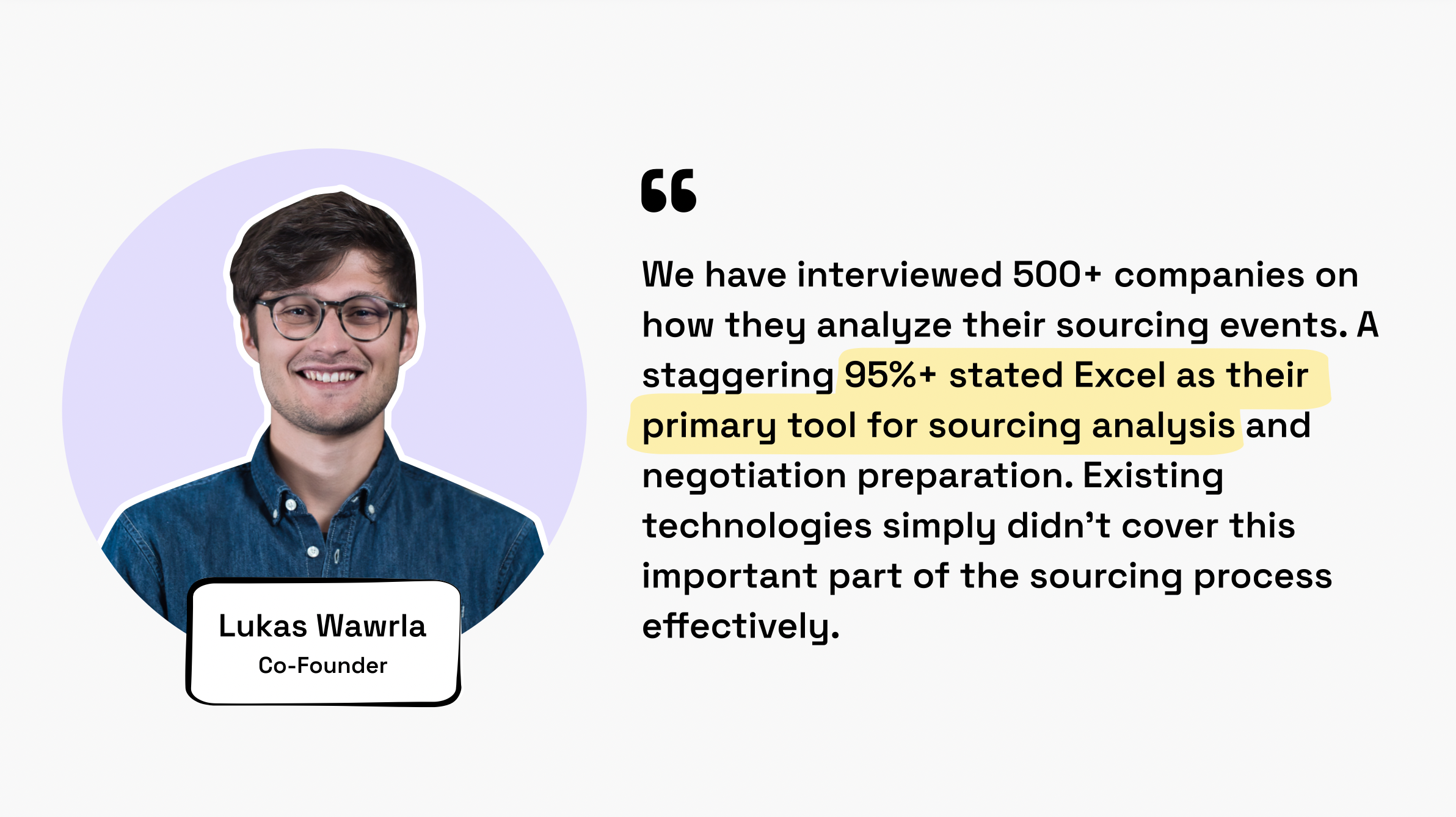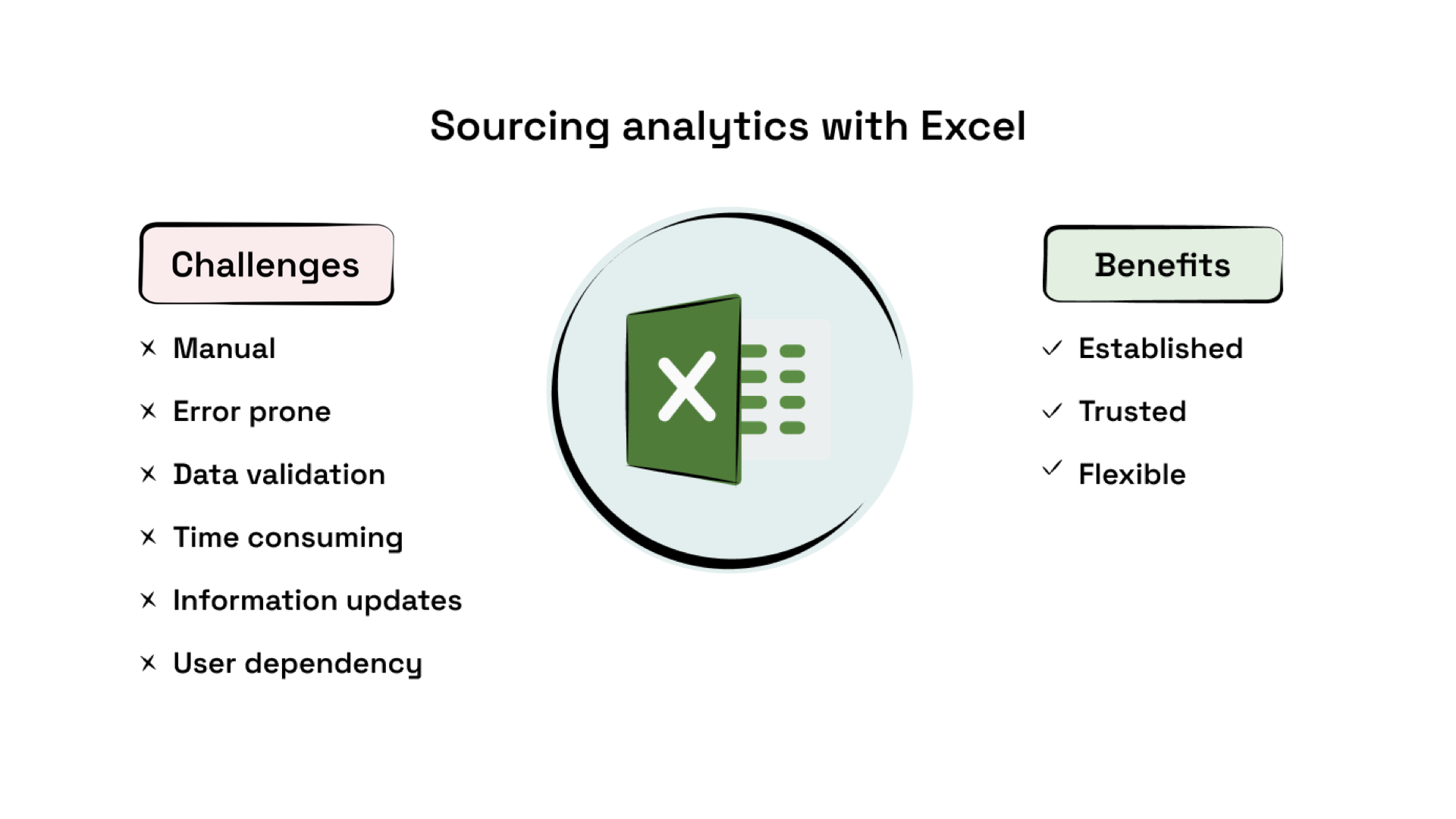The dilemma with Excel-based bid analytics in strategic sourcing

The dilemma with Excel-based bid analytics in strategic sourcing
Identifying optimal supplier allocations for strategic sourcing events in Excel doesn’t work. Yes, Excel is almighty, and some Excel wizard somewhere can maybe do it for individual projects. But can you or your team do it? And is this a scalable approach for your organization?
Procurement is facing a tremendous amount of information that needs to be processed and considered when making decisions on the best supplier.
This information overload can be called complexity, which we have defined in Introduction to Sourcing Optimization, which highlights:
- A considerable amount of information needs to be considered when making strategic sourcing decisions. We call this 'complexity'.
- Sourcing analytics in Excel is no breeze: it’s manual, error prone and does not harness the power of data within or beyond the individual project.
- Modern decision support tools can help Procurement create efficiency, leverage new and historic data in real time, and actively drive their strategic initiatives forward.
Decision making in strategic sourcing events
In strategic sourcing complexity translates to having
- many items,
- detailed cost breakdowns,
- many suppliers,
- supplier limitations, and/or
- business considerations & preferences
that make it difficult to identify the optimal combination of suppliers and items. Considering that the best value for an organization is rarely the cheapest option, balancing the cost of goods and services with other decision factors is vital.
Supporting information like supplier quality or performance, ESG metrics or risk considerations are often required to put supplier proposals in perspective and understand the Total Cost of Ownership of a project. We believe that most sourcing events are based on more than just price and can therefore be considered as complex in the sense of the definition. We call them "holistic sourcing decisions".

Unfortunately, the tools available to Procurement lack the flexibility to design complex tenders within said tool. If they do support them, the set-up process or user experience is usually less than straight-forward. Especially events that try to capture detailed price breakdowns and qualitative information simultaneously frequently push professionals back to the tools they are more familiar with – Outlook and Excel.
The issue with Excel
Don’t get me wrong. Excel is extremely powerful and flexible, and most individuals feel quite comfortable navigating it. Unfortunately, this way of working is not harnessing the power of data within or beyond the individual project.
Strategic sourcing managers often wish to have more time for strategic tasks, yet they spend tremendous time with manually copying and pasting supplier inputs from tenders. It is a highly time consuming and error prone task. With Procurement being pressured to release RFx documents that are not 100% complete, these tasks must be repeated for each tender round, requirement change or newly requested input.
Considering the creation of reports for complex events can take any where between days and weeks, the data quality challenge rises exponentially with the complexity of the project. As sourcing managers need to manually verify the provided inputs and identify errors, mistakes, and outliers, they can’t ensure an appropriately high data quality for their analysis, which further reduces their efficiency.

Finally, complex sheets can be scary for many users and make them feel uncomfortable or intimidated. Working in Excel means the quality of the analysis is highly dependent on the individual ability to question & interrogate large amounts of information or to express mathematical problems correctly. The lack of decision support tools for sourcing teams therefore often results in organizations hiring specialist external support to execute high value sourcing events.
A new approach to making data actionable
Working in Excel is a very individual way of working that rarely goes beyond the individual project or the private desktop. In an environment that requires collaboration and inputs from multiple stakeholders across geographic boundaries, working in shared drives or share point is usually adding to the confusion and introduces new challenges rather than ensuring collaboration.
That’s why modern decision support tools allow easy access to information for all relevant stakeholders of an organizations and enable them to create sustainable insights and learnings that can be leveraged in future tenders.
These tools improve on Excel not only in terms of analytical efficiency, but also in terms of the impact Procurement can deliver. They make the inclusion of additional internal and external information easy and doable. Data on suppliers like performance, risk, sustainability, or diversity can easily be used to plan and model different scenarios or inform the preparation of negotiations. The same is true for external market data (e.g., price benchmarks), stakeholder evaluations, and soft factors relevant to the overall evaluation.
.png)
This means available data that was previously unused or hard-to-qualify can now be easily included into the decision process by everybody. Embedding this information into the decision process and consistently applying it across the organization and tenders means the data becomes actionable. It allows Procurement teams to do true Total Cost of Ownership evaluations and actively drive and measure their strategic initiatives and impact.
This way, organizations don’t only create efficiency through their own single source of truth that informs future sourcing events but also free up time for more value adding activities like scenario planning, negotiation preparation or stakeholder management. In an environment where information is king and speed is of essence, leveraging historic and new information in real time can be a truly powerful competitive advantage.


